I am lucky to be an admin of a server, but I have no idea how many versions of sql server on this server. When I opened the file Microsoft SQL Server, there are files called 80, 90, 100, 110. And I have only found SQL Server 2012 setup, so what's the relationship between the files names like 80, 90, 100, 110 with sql server versions like 2008, 2012?
Asked
Active
Viewed 9.4k times
66
-
1I googled "sql server versions" for you: http://support.microsoft.com/kb/321185 (see More Information section for the list) – Blorgbeard Sep 12 '13 at 01:29
1 Answers
152
The mapping is (along with links to build lists):
| Major Version / Compatibility Level |
Version Label | File Version |
|---|---|---|
| 80 | SQL Server 2000 | 8.00.xxxx |
| 90 | SQL Server 2005 | 9.00.xxxx |
| 100 | SQL Server 2008 | 10.00.xxxx |
| 105 | SQL Server 2008 R2 | 10.50.xxxx |
| 110 | SQL Server 2012 | 11.00.xxxx |
| 120 | SQL Server 2014 | 12.00.xxxx |
| 130 | SQL Server 2016 | 13.00.xxxx |
| 140 | SQL Server 2017 | 14.00.xxxx |
| 150 | SQL Server 2019 | 15.00.xxxx |
| 160 | SQL Server 2022 | 16.00.xxxx |
However, just because you have a folder with one of these identifiers, does not mean you have a SQL Server instance of that version installed; some folders are laid down by newer versions for backward compatibility reasons, added by Visual Studio and other tools, or are left behind after an instance has been removed or upgraded.
To see what you actually have installed:
- Go to your start menu, and go to the highest version of "Microsoft SQL Server 20xx" that you have.
- Under that menu, go to Configuration Tools > SQL Server Configuration Manager.
- In the SQL Server Services tab, sort the data by Service Type, and for each line item with the type "SQL Server" (not blank, or "SQL Agent", or any other), right-click the SQL Server portion and select Properties.
- On the Advanced tab, scroll down, there will be a field called "Version", and the number there will map to one of the patterns in the 3rd column above.
Aaron Bertrand
- 272,866
- 37
- 466
- 490
-
What is your source for that mapping? When I look at https://support.microsoft.com/en-us/kb/321185 it says that SQL Server 2008 R2 Logs are written to 110, while 2008 are written to 100. Your mapping would suggest they write their logs to folders corresponding to subsequent version. – Frank May 19 '16 at 11:30
-
See https://learn.microsoft.com/en-us/sql/sql-server/install/file-locations-for-default-and-named-instances-of-sql-server – Markus Oct 06 '17 at 08:20
-
to get to `SQL Server Configuration Manager`, run this command in command line: `C:\Windows\SysWOW64\mmc.exe /32 c:\Windows\SysWOW64\SQLServerManager11.msc` – XoXo Aug 08 '22 at 17:47
-
@XoXo Will that always launch _the highest version you have_? If you use a lower version, you're not always going to see all of your instances or have all of the configuration details available, which is why I stayed away from specifying an explicit version or path. – Aaron Bertrand Aug 08 '22 at 17:50
-
@XoXo And actually on my machine running that exact command just led to _two_ empty console root windows [like this](https://i.stack.imgur.com/Hlb9E.png). – Aaron Bertrand Aug 08 '22 at 18:11
-
